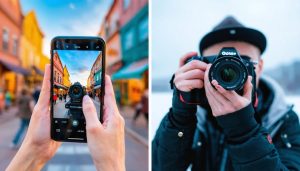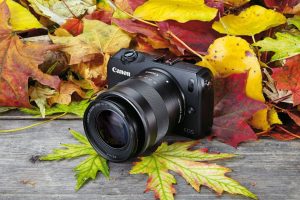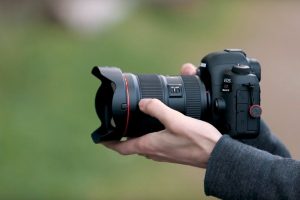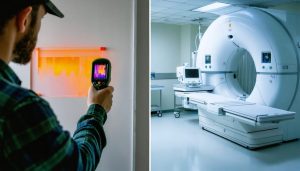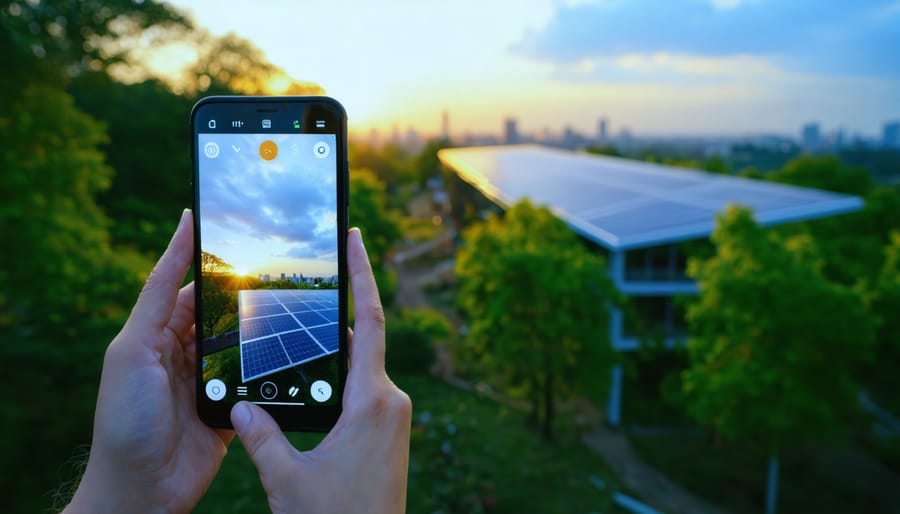
Transform your environmental photography into a powerful storytelling medium by mastering the art of sustainability-focused photoshoots. Position recycled materials as striking compositional elements, leverage natural lighting to capture stunning shots, and document authentic moments of environmental stewardship in action. Modern smartphone cameras excel at showcasing the delicate interplay between nature and human innovation, making them perfect tools for highlighting sustainable practices and green initiatives.
The key to impactful sustainability photography lies in revealing the beauty of eco-conscious choices through thoughtful framing and creative perspectives. Whether you’re photographing solar panels catching the golden hour light or zero-waste lifestyle moments, each image should communicate both environmental responsibility and aesthetic appeal. Focus on contrasting textures, dynamic angles, and rich environmental details to create compelling visual narratives that inspire positive change while maintaining professional quality.
This comprehensive guide will walk you through essential techniques for creating powerful environmental imagery using just your smartphone, combining technical expertise with creative vision to document our journey toward a more sustainable future.
Planning Your Sustainability Story
Identifying Your Environmental Message
Before diving into your sustainability photoshoot, it’s crucial to identify a clear environmental message that resonates with your audience. Start by asking yourself what aspect of sustainability matters most to you – whether it’s climate change, wildlife conservation, waste reduction, or sustainable living practices.
Consider local environmental issues that directly impact your community. These stories often create the most powerful and relatable images because they show immediate, tangible effects. For instance, you might focus on coastal erosion in your area, urban gardening initiatives, or local recycling challenges.
Think about the emotional response you want to evoke. Do you want to highlight environmental problems through stark imagery, or inspire hope by showcasing solutions? Both approaches can be effective, but they require different visual strategies. Solutions-focused photography might capture renewable energy installations or community clean-up efforts, while problem-focused shots could document pollution or habitat loss.
Remember to research your chosen topic thoroughly. Understanding the scientific and social context behind your subject matter will help you create more informed, impactful images that tell a complete story.
Location Scouting for Impact
Location selection plays a crucial role in telling your sustainability story through photography. When scouting locations, look for settings that naturally complement your environmental message. Consider places that showcase both environmental challenges and solutions – like community gardens, solar farms, or areas displaying the contrast between preserved and developed landscapes.
Natural lighting is your ally in sustainable photography, so visit potential locations at different times of day to understand the light patterns. Dawn and dusk often provide the most dramatic natural lighting while reducing the need for artificial light setups. Scout for locations that offer multiple shooting angles and varying compositions within walking distance to minimize transportation impact.
Urban environments can be particularly powerful for sustainability narratives – look for green buildings, vertical gardens, or bicycle lanes juxtaposed against traditional city landscapes. In natural settings, seek out locations that demonstrate environmental conservation efforts or the impact of climate change.
Remember to always obtain necessary permissions and respect local regulations. Choose accessible locations that won’t require excessive travel or disturb sensitive ecosystems. The best locations often tell their own environmental stories – your job is to capture and amplify them through your lens.
Technical Mobile Photography Tips for Sustainability Shots
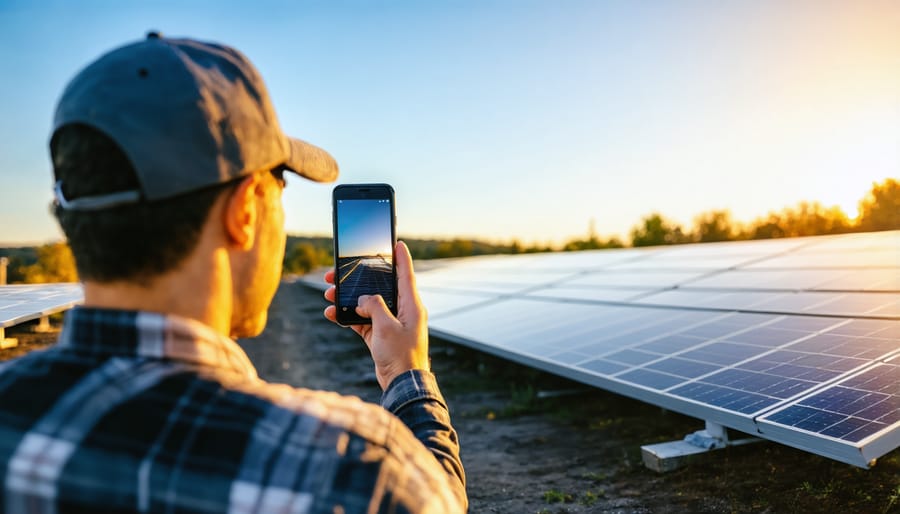
Natural Light Mastery
Natural light is your greatest ally in sustainable photography, offering an environmentally friendly way to capture stunning images while reducing your carbon footprint. Understanding how to harness available light not only enhances your environmental subjects but also eliminates the need for artificial lighting equipment and their associated energy consumption.
The golden hours – shortly after sunrise and before sunset – provide optimal lighting conditions for environmental photography. During these periods, the warm, directional light creates depth and dimension, perfectly highlighting textures in natural subjects like leaves, water bodies, and sustainable architecture. Position your subjects to take advantage of side-lighting, which reveals form and texture while creating dramatic shadows that add visual interest to your compositions.
Cloudy days offer their own advantages, acting as nature’s softbox. The diffused light minimizes harsh shadows and allows for even illumination of your sustainable subjects, particularly useful when photographing renewable energy installations or green building features. Learn to read the quality of light by observing how it interacts with your surroundings – notice how it filters through trees or reflects off surfaces.
For challenging lighting situations, use natural reflectors like light-colored walls or even the ground to bounce light back onto your subject. This technique eliminates the need for artificial lighting equipment while maintaining the authentic feel of your environmental storytelling. Remember that shooting in RAW format gives you more flexibility in post-processing to adjust exposure while maintaining the natural essence of the scene.
Composition Techniques for Environmental Impact
When composing shots for sustainability-focused photography, thoughtful framing can dramatically enhance your message. Start by implementing the rule of thirds to create visual balance, but consider how this classic principle can highlight environmental contrasts. For instance, position a thriving green space against urban development to illustrate the importance of natural preservation.
Leading lines are particularly powerful in sustainability photography – use paths, rivers, or fallen trees to guide viewers’ eyes through your environmental narrative. These compositions can emphasize the interconnectedness of ecosystems or highlight the impact of human activity on natural landscapes.
Implementing expert camera techniques like framing through natural elements (branches, leaves, or rock formations) can create depth while subtly reinforcing your environmental message. Consider incorporating negative space to emphasize isolation or vulnerability in nature, particularly effective when documenting endangered species or habitats.
Scale is another crucial element – juxtapose small environmental details against larger landscapes to demonstrate impact. A single plastic bottle against a pristine beach or a sprouting seedling beside a clearcut forest tells a compelling story about human influence on the environment.
For sustainability-focused portraits, position subjects within their environmental context rather than against neutral backgrounds. A renewable energy engineer surrounded by solar panels or a conservation volunteer amidst restored habitat creates authentic environmental storytelling.
Remember to capture different perspectives – get low to show ground-level impact or seek elevated viewpoints to demonstrate the scope of environmental challenges or solutions. These varying angles help viewers understand both micro and macro aspects of sustainability issues.
Layering your compositions with foreground, middle ground, and background elements can create visual depth while showing the interconnected nature of environmental systems. This technique is particularly effective when documenting ecosystem restoration or sustainable agriculture projects.
Essential Mobile Apps and Tools
Editing Apps for Environmental Stories
When it comes to editing environmental stories through photography, selecting the right apps can make a significant difference in conveying your sustainability message. To effectively transform your mobile photos into compelling environmental narratives, focus on apps that enhance natural colors and textures while maintaining authenticity.
Snapseed offers excellent selective adjustment tools perfect for highlighting environmental subjects without appearing artificial. Its healing tool is particularly useful for removing unwanted elements that might distract from your sustainability message, such as litter or power lines.
VSCO’s natural-looking filters work wonderfully for environmental photography, offering presets that enhance earth tones and green spaces without oversaturation. Their adjustments preserve the realistic quality essential for documenting environmental subjects.
For more advanced editing, Lightroom mobile excels at bringing out details in shadows and highlights – crucial when photographing contrasting elements like solar panels or forest canopies. Its color grading tools help create cohesive visual stories while maintaining natural appearances.
When editing, remember these key principles:
– Keep adjustments subtle to maintain credibility
– Enhance natural colors rather than dramatically altering them
– Use vignetting sparingly to draw attention to environmental subjects
– Maintain balanced exposure to preserve detail in both highlights and shadows
– Consider using split-toning to create mood while keeping the image authentic
These techniques help create impactful environmental stories while maintaining the integrity of your sustainability message.
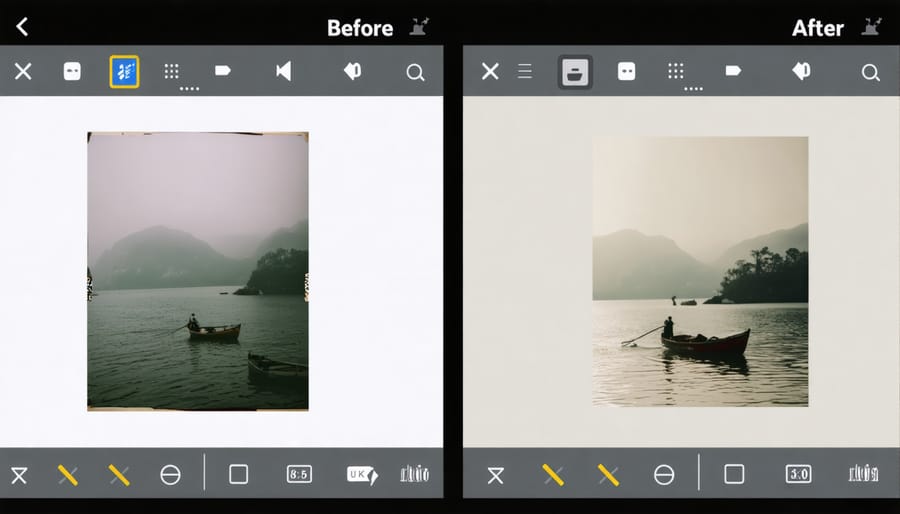
Eco-friendly Photography Accessories
In today’s environmentally conscious world, choosing sustainable photography gear doesn’t mean compromising on quality. Many photographers are discovering innovative clever accessories made from recycled or biodegradable materials that deliver professional results while minimizing environmental impact.
Consider investing in camera straps crafted from recycled climbing ropes or sustainable cork, which not only look stylish but also tell a compelling story about environmental responsibility. Memory card cases made from bamboo or recycled plastic offer excellent protection while reducing your carbon footprint.
For lighting solutions, opt for rechargeable batteries and LED panels that consume less energy than traditional studio lights. Solar-powered battery chargers are becoming increasingly efficient, making them perfect companions for outdoor shoots.
When it comes to camera bags, several manufacturers now offer options made from recycled ocean plastic or organic cotton. These alternatives are not only durable but also help reduce waste in our oceans.
Filter systems made from sustainable materials like aluminum or recycled glass provide the same professional results as their conventional counterparts. Many photographers are also switching to reusable lens cleaning cloths and natural cleaning solutions instead of disposable wipes.
Remember, small changes in your gear choices can make a significant impact on the environment while maintaining professional standards in your photography work.
Sharing Your Environmental Impact
Platform-Specific Strategies
Each social media platform has unique requirements for sustainability photography content. For Instagram, focus on striking single images with strong visual impact – think close-ups of renewable energy installations or dramatic environmental landscapes. Use Instagram’s square format to your advantage by creating symmetrical compositions that draw attention to sustainable elements.
On Pinterest, vertical images perform best, so shoot your sustainability subjects in portrait orientation with a 2:3 ratio. This platform favors bright, clean aesthetics with minimal distractions, making it perfect for before-and-after sustainability transformations or eco-friendly lifestyle shots.
Twitter demands quick, impactful visuals that work in smaller sizes. Focus on simple compositions with clear subjects and high contrast. Consider creating image carousels that tell a sustainability story across multiple frames.
For LinkedIn, maintain a professional aesthetic while showcasing corporate sustainability initiatives. Wide-angle shots of green buildings, sustainable technology, or environmental projects work well here. Include people when possible to add human interest and scale.
Facebook allows for more varied content, but engagement tends to be highest with landscape-oriented images that include human elements. Create mini-galleries that document sustainability projects from start to finish, or showcase local environmental initiatives.
Remember to optimize your image quality for each platform while keeping file sizes manageable. This ensures your sustainability message comes through clearly without compromising loading times or visual impact.
Building an Environmental Photography Portfolio
Building a compelling environmental photography portfolio requires careful curation and a clear narrative thread that connects your images. Start by identifying specific themes within sustainability that resonate with you, such as renewable energy, conservation efforts, or the impact of climate change on local communities.
Your portfolio should tell a story through a mix of wide environmental shots, intimate details, and human elements that showcase the relationship between people and nature. Consider including before-and-after sequences that demonstrate environmental changes or the positive impact of sustainability initiatives.
When selecting images for your portfolio, maintain visual consistency in terms of color palette, composition, and post-processing style. This doesn’t mean all photos should look identical, but they should feel cohesive when viewed together. Include a balance of both positive and challenging images – document environmental issues while also highlighting solutions and success stories.
Consider organizing your work into mini-series or projects. For example, you might focus on local recycling programs, sustainable agriculture, or green architecture. Each series should contain 6-10 images that work together to convey a specific aspect of environmental sustainability.
Remember to include detailed captions and context for each image, explaining the environmental significance and any relevant data or statistics. This helps viewers understand the broader impact of the issues you’re documenting and adds credibility to your work as an environmental photographer.
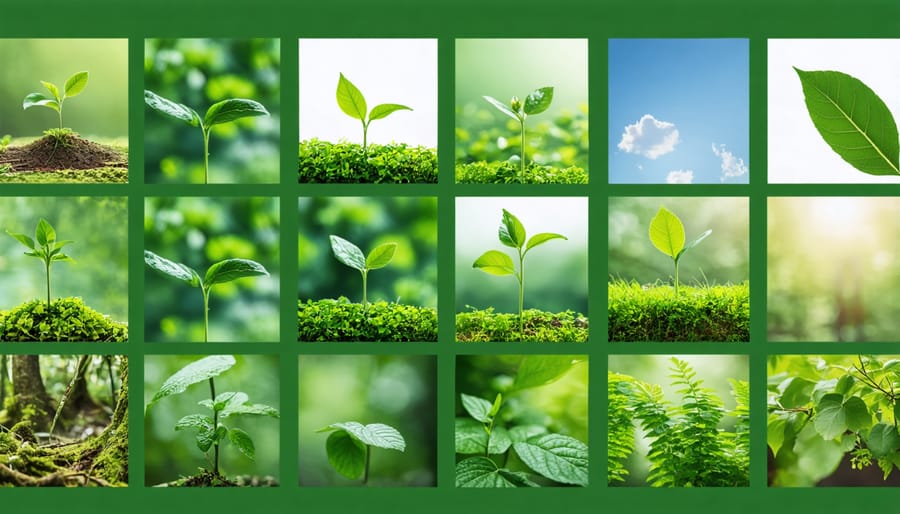
As we’ve explored throughout this guide, sustainability photoshoots offer a powerful way to tell compelling environmental stories and inspire positive change through visual storytelling. By combining technical expertise with environmental consciousness, you can create impactful images that not only look stunning but also contribute to a greater cause.
Remember that successful sustainability photography doesn’t require expensive equipment or elaborate setups. What matters most is your creative vision and commitment to showcasing environmental themes authentically. Whether you’re capturing local conservation efforts, documenting sustainable practices, or highlighting environmental challenges, your unique perspective can make a difference.
Start small by practicing in your local community, experimenting with different lighting conditions, and developing your own sustainable photography style. Consider joining environmental photography groups or connecting with local conservation organizations to find meaningful subjects and expand your network.
As you continue your journey, keep sustainability at the core of your practice. Choose eco-friendly equipment when possible, minimize your environmental impact during shoots, and always respect the natural spaces you photograph. Share your work responsibly and use your platform to educate others about environmental issues.
The world needs more photographers dedicated to sustainability storytelling. Your images can help raise awareness, inspire action, and document our planet’s ongoing environmental transformation. Take what you’ve learned here and start creating your own sustainable visual narrative today.

